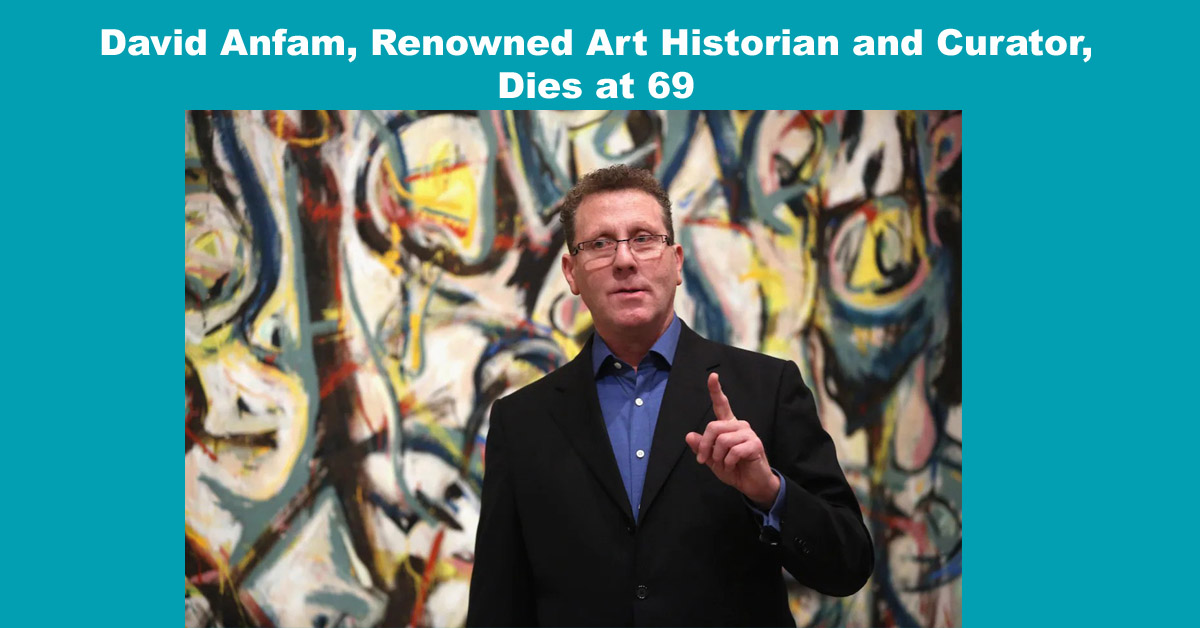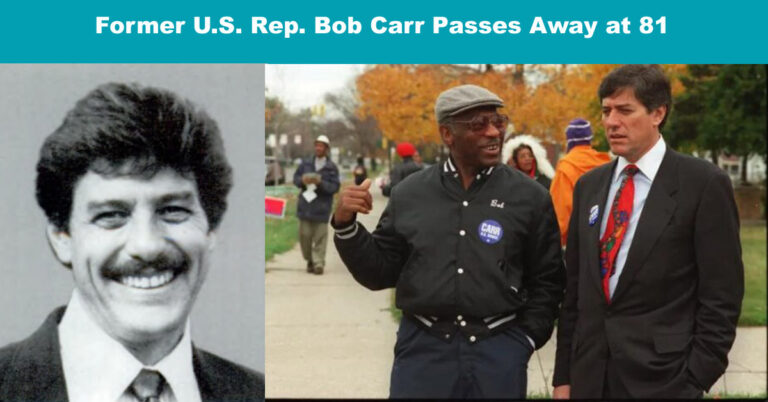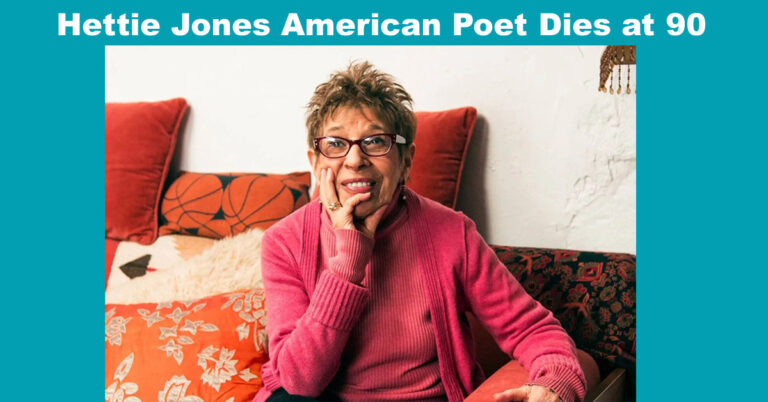David Anfam, Renowned Art Historian and Curator, Dies at 69
David Anfam, Renowned Art Historian and Curator, Dies at 69
David Anfam, a prominent art historian who transformed the study of Abstract Expressionism, passed away in London at 69. Known for his influential catalogue raisonné of Mark Rothko and a celebrated 2016 survey at the Royal Academy of Arts, Anfam’s rigorous scholarship and accessible writing reshaped the understanding of Abstract Expressionism. His curatorial work spanned a diverse range of artists, and his advocacy for bold artistic expression left a lasting impact on the art world.
David Anfam: Art Historian Who Rewrote the History of Abstract Expressionism, Dies at 69
David Anfam, an influential art historian and curator renowned for his extensive scholarship on Abstract Expressionism, passed away in London on Wednesday. He was 69 years old. Anfam’s contributions to the field have been pivotal, reshaping our understanding of this significant art movement.
A Legacy of Scholarship and Curatorship
David Anfam’s meticulous research and writing on Abstract Expressionism have earned widespread acclaim. His 1998 catalogue raisonné of Mark Rothko’s paintings, a comprehensive 1,000-page volume, is considered a cornerstone for scholars of the movement. Art critic John Russell famously described it as “a book for all seasons.”
In 2016, Anfam curated a highly praised survey of Abstract Expressionism at London’s Royal Academy of Arts. Jackie Wullschläger of the Financial Times lauded the exhibition as “the most pleasurable, provocative exhibition of American art in Britain this century.” Anfam’s book on Abstract Expressionism, part of Thames & Hudson’s “World of Art” series, remains influential and is now in its second edition.
Anfam’s work also brought to light previously unexamined aspects of Clyfford Still’s grand abstractions and Jackson Pollock’s paintings, making Abstract Expressionism more accessible to mainstream audiences.
An Accessible and Uncompromising Voice
Despite his deep academic insights, Anfam was known for his clear and engaging writing style. He believed in avoiding jargon and ensuring that his work remained accessible to a broad audience. As he once stated, “Jargon was ‘unreadable writing.’”
Anfam’s impact extended beyond writing. He curated exhibitions for a diverse range of artists, including Lynda Benglis and Bill Viola, whom he showcased in a church during the 2007 Venice Biennale. His approach to curating was as innovative as his scholarship.
From Aspiring Historian to Renowned Scholar
Born in London in 1955, Anfam’s early exposure to art history came from his parents’ library books, despite their lack of formal art knowledge. By the age of 15, he was determined to pursue a career in art history. He studied at London’s Courtauld Institute of Art, completing both his undergraduate degree and PhD under the guidance of art historian John Golding.
Anfam’s dissertation focused on Clyfford Still, an artist known for his distinctive style and formidable presence. Although he never met Still, his research established him as a leading authority on Abstract Expressionism.
Overcoming Challenges and Continuing Contributions
Despite his qualifications, Anfam faced challenges in establishing a career in art history. He initially worked part-time, driving Volvos from the factory to their owners. Unusually candid about this phase of his life, he included it in his LinkedIn profile, reflecting on it with a sense of humor: “Big fun driving fancy cars at high speeds all over the UK… and never having a thought in my head.”
His perseverance paid off when Nikos Stangos at Thames & Hudson commissioned him to write the Abstract Expressionism book. The Rothko catalogue raisonné, a project that spanned nearly a decade, underscored Anfam’s commitment to scholarly rigor. “If there’s one business I take with absolute deadly seriousness, it’s every word committed to the page,” he told critic John Yau.
Anfam also served as a senior consulting curator at the Clyfford Still Museum in Denver, contributing significantly to its research center. His efforts were aimed at bringing Still’s work to the forefront of 20th-century art.
A Bold Advocate for Art
In addition to his scholarly and curatorial work, Anfam was a vocal advocate for the arts. He openly criticized the National Gallery of Art’s decision to delay a Philip Guston exhibition in 2020, asserting that it was “shocking” and urging institutions to “Be bold. Stick to your guns.”
David Anfam’s contributions to art history and his unwavering commitment to the field have left an indelible mark. His scholarship, curatorial achievements, and advocacy have reshaped our understanding of Abstract Expressionism and inspired countless others in the art world.
Famous Memorial and Join TELEGRAM
David Anfam, Renowned Art Historian and Curator, Dies at 69
Frequently Asked Questions
Q: Who was David Anfam?
A: David Anfam was a distinguished art historian and curator renowned for his groundbreaking scholarship on Abstract Expressionism. His influential works include a comprehensive catalogue raisonné of Mark Rothko’s paintings and a celebrated survey of Abstract Expressionism at London’s Royal Academy of Arts.
Q: What are some of David Anfam’s notable contributions to art history?
A: Anfam’s notable contributions include his 1998 catalogue raisonné of Mark Rothko, which is a key text for scholars of Abstract Expressionism, and his 2016 survey of the movement at the Royal Academy of Arts. His book on Abstract Expressionism for Thames & Hudson’s “World of Art” series is also highly regarded.
Q: What was David Anfam’s approach to writing and scholarship?
A: Anfam was known for his clear and engaging writing style, avoiding jargon to make his work accessible to a broader audience. He valued rigorous scholarship but believed that complex ideas should be communicated in an understandable manner.
Q: Did David Anfam have any other roles besides being an art historian?
A: Yes, Anfam was also a curator who organized exhibitions for various artists, including Lynda Benglis and Bill Viola. He served as a senior consulting curator at the Clyfford Still Museum and was involved in numerous art publications and critiques.
Q: How did David Anfam’s early life influence his career?
A: Growing up in London, Anfam’s early exposure to art came from his parents’ library books. Despite their lack of formal art knowledge, their interest in art fueled his passion, leading him to pursue a career in art history from a young age.
Q: What was David Anfam’s stance on contemporary art issues?
A: Anfam was known for his outspoken views on contemporary art issues. For instance, he criticized the National Gallery of Art’s decision to delay a Philip Guston exhibition in 2020, urging institutions to remain bold and committed to showcasing important works of art.






